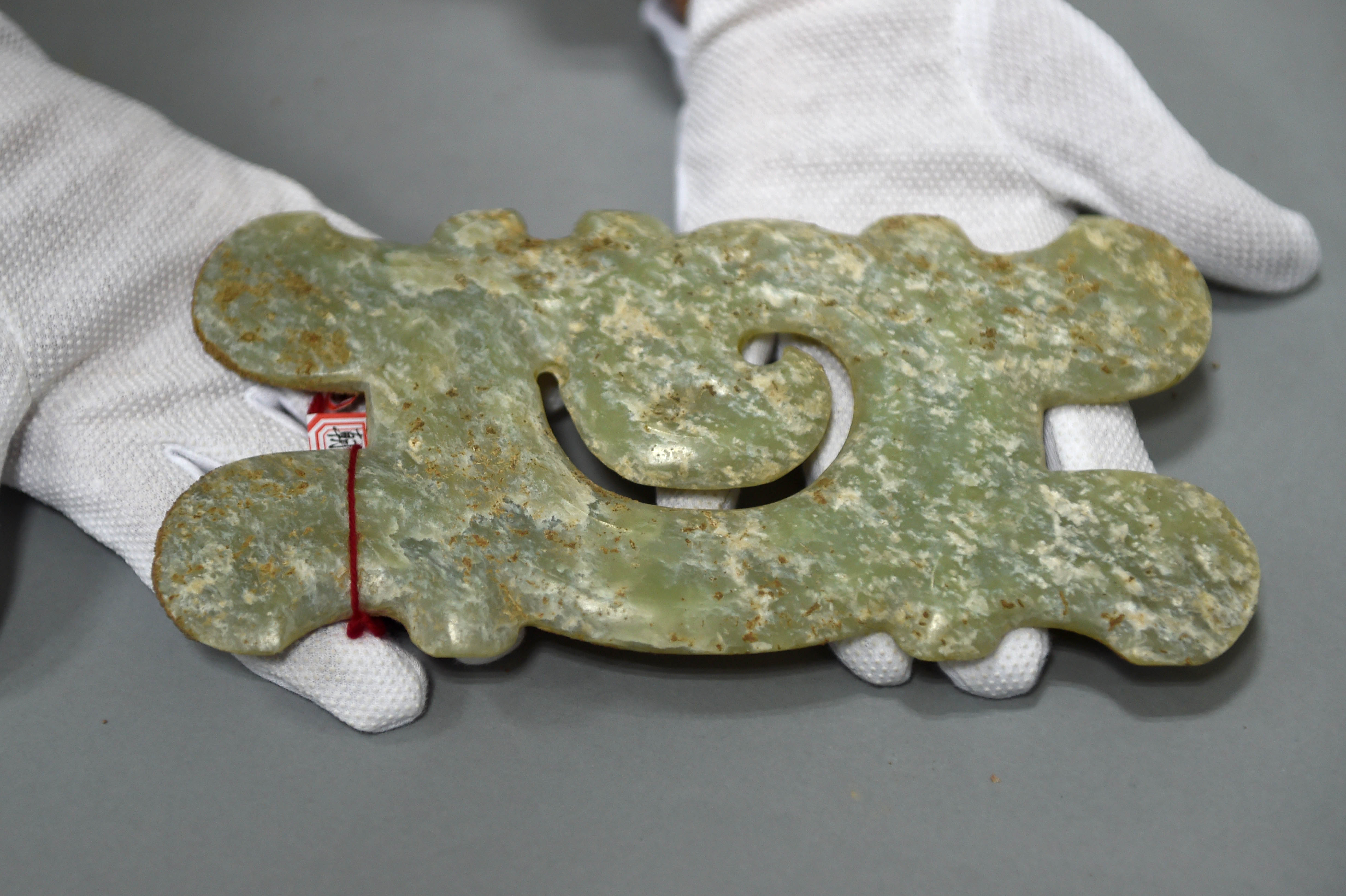 |
|
A thundering jade cloud serpent, which dates to the Hongshan Culture (4700BC to 2900BC), is among the recovered artifacts. [Photo/Xinhua] |
Chinese police have arrested 175 people in what's being touted as the largest-ever bust of tomb raiders since the People's Republic of China was founded in 1949, and recovered 1,168 cultural relics.
The group was accused of illegal excavations in Niuheliang, a Neolithic site in northeastern Liaoning province. Their activities have seriously damaged the site, said the ministry. The cultural relics which seized by authorities estimated to be worth around 500 million yuan ($80 million).
The recovered artifacts include an ornate coiled jade dragon that is known as a representation of Hongshan Culture (in an area stretching from Inner Mongolia to Liaoning province, and dated from about 4700 BC to 2900 BC).
According to the police, the 175 tomb raiders, who belong to 10 gangs, had a clear division of labor covering the whole process, from excavation to sales. Four archeologists are also suspected of participating in the tomb raiding and selling the stolen artifacts.
Several artifacts dealers, who have certificates or run shops, helped with excavation of the artifacts and sales by doing real-time business at the excavation sites. An artifacts shop owner, surnamed Li, was engaged in illegal artifacts trading and was titled "president of the cultural industry fair association of Cazuo county in Liaoning province".